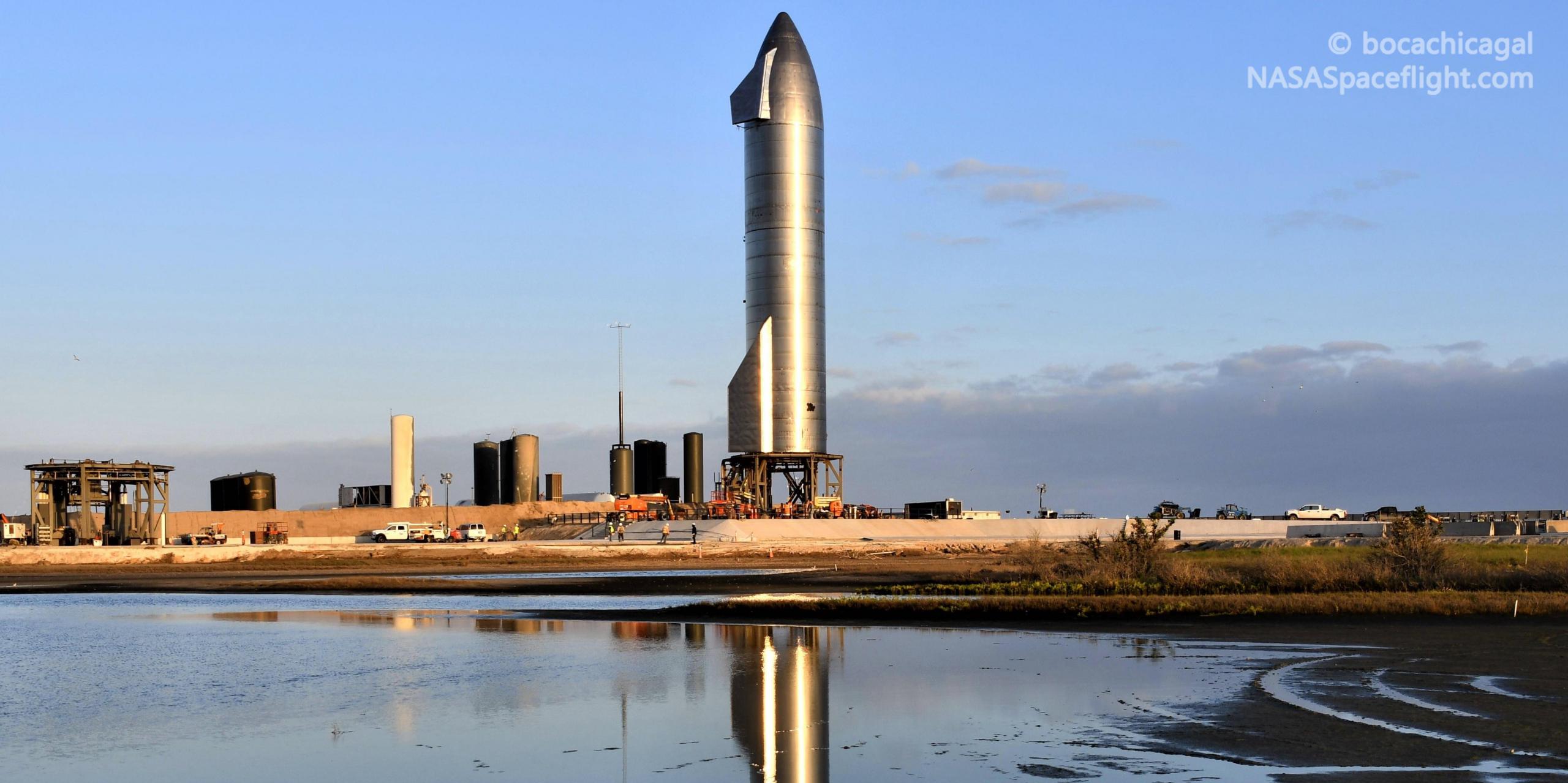
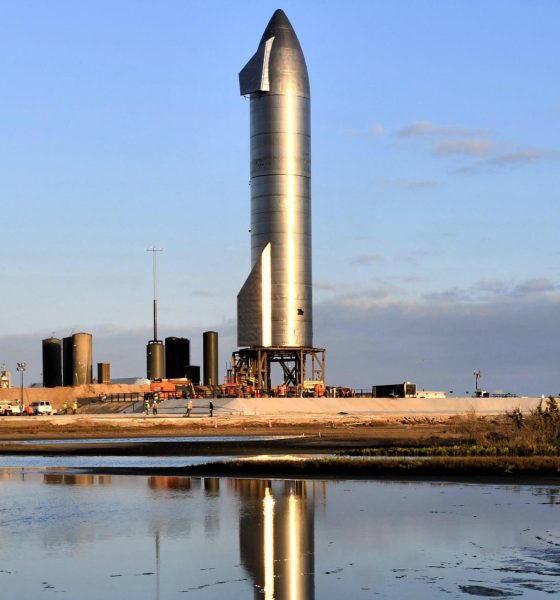
News
SpaceX’s Elon Musk hints at “notable” Starship changes, explains static fire anomaly
CEO Elon Musk has offered an explanation for SpaceX’s recent Starship static fire anomaly and says that an overview of the next-generation rocket development program will be delayed to account for some “notable” design changes.
Over the last several months, Musk has promised to do one of his (thus far) usual annual Starship updates, either in the form of a presentation in South Texas, an article published on SpaceX’s website, or both. Originally expected in September or October, the CEO’s tentative schedules have come and gone several times. Simultaneously, however, SpaceX has been preparing Starship serial number 8 (SN8) for a range of crucial tests and Starship program firsts, recently culminating in a successful cryogenic proof test, multiple wet dress rehearsals (WDRs), nosecone installation, the first triple-Raptor static fire test, engine tests using smaller ‘header’ tanks, and more.
Unfortunately for SN8, the most recent Raptor engine header static fire – drawing propellant from two small internal tanks mainly used for landing burns – did not go according to plan, resulting in some kind of high-temperature fire and severing Starship’s hydraulic systems. For SpaceX test controllers, that meant a total loss of control of most vehicle valves and pressurization systems, essentially putting one of Starship SN8’s header tanks through an unplanned pressure and failsafe test. In the days since, what exactly caused that unfortunate failure has been the subject of a great deal of discussion – discussion that can finally be put to rest with new information from Musk himself.
In a surprise, SpaceX had apparently decided to add a failsafe to Starship SN8’s new nose section, installing what is known as a burst disk – effectively an automatic single-use valve. Once the upper (liquid oxygen) header tank reached dangerous pressures, the force of that pressure broke the seal, allowing the rocket to vent excess pressure and avoid what would have otherwise been a potentially catastrophic explosion.
The cause of that near-miss, according to Elon Musk, was as simple as debris kicked up during the Starship SN8 Raptor engine static fire directly prior. Producing up to 200 metric tons (~450,000 lbf) of thrust and an exhaust stream traveling some 3.3 kilometers per second (2 mi/s, Mach ~10), Musk says that Raptor tore apart a special ceramic coating covering the concrete directly beneath Starship SN8. Likely accelerated to extreme velocities in milliseconds, shards of that coating reportedly “severed [an] avionics cable, causing [a] bad [Raptor engine shutdown].”
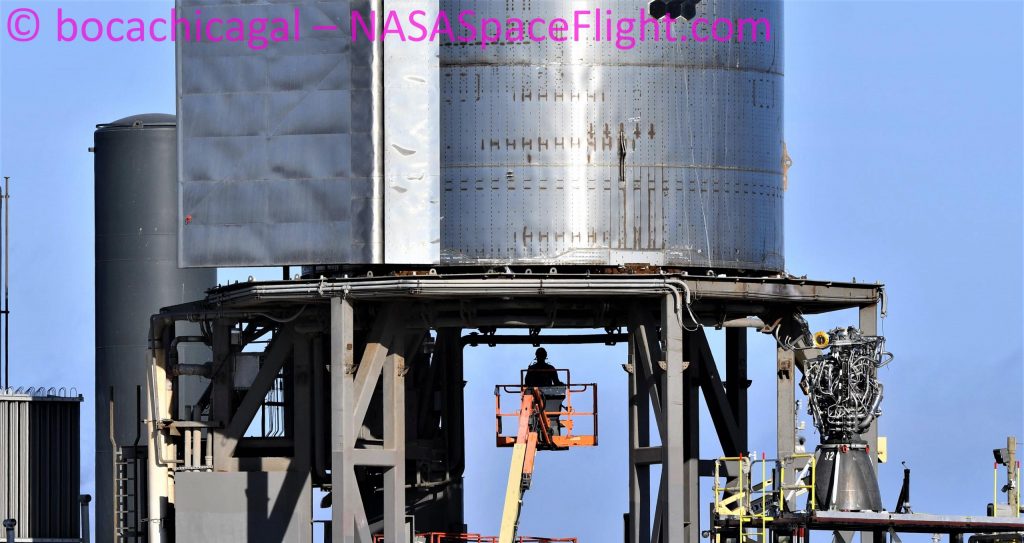
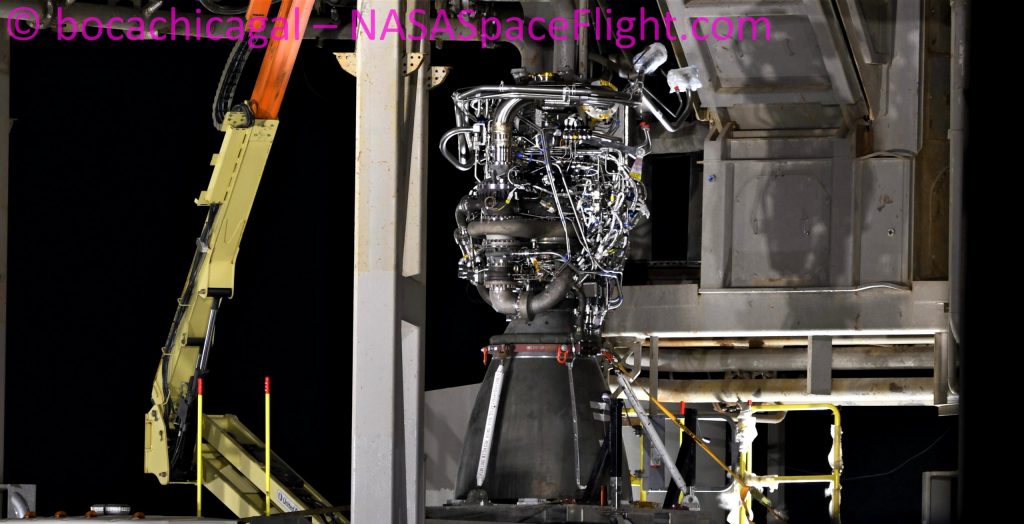
Prior to Musk’s comments, SpaceX technicians had already removed on of SN8’s three Raptors – SN32 – on November 14th and replaced it with Raptor SN42 on November 16th, effectively confirming that any damage suffered by Starship’s engine section was easily repairable. It’s unclear how exactly a single severed cable could result in a Raptor engine seemingly dripping molten metal but regardless of the cause, the fix appears to have been a quick one.
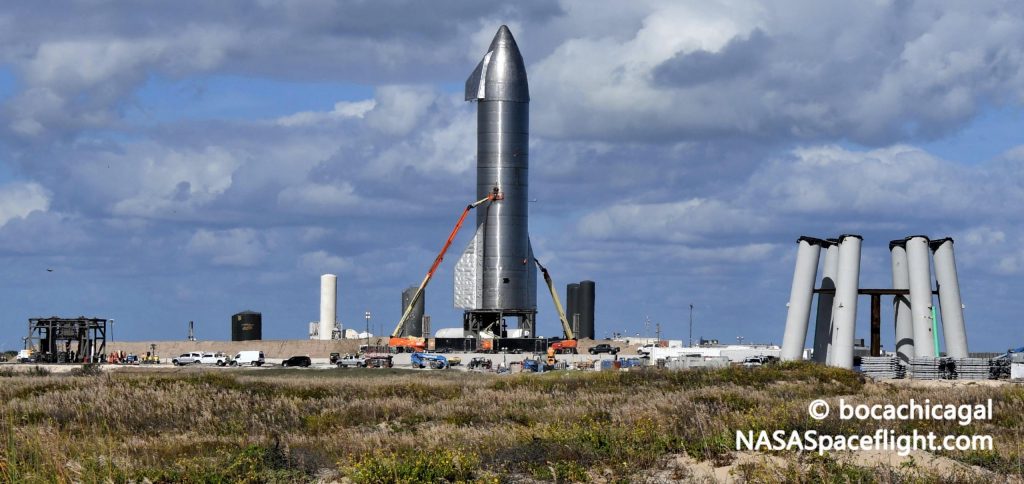
In response to the anomaly, Musk says that Starship avionics cables will ultimately be routed inside steel pipes to shield them from debris, while “water-cooled steel pipes” will be added to the launch pad to help limit the damage Raptors can cause. Perhaps as a partial result of SN8’s troubles at the launch pad, Musk says that his Starship blog post will have to wait, as SpaceX “[may be] making some notable changes” to the launch vehicle.
Prior to Starship SN8’s failed November 12th Raptor test, SpaceX was expected to attempt three consecutive static fires before clearing the rocket for an ambitious 15 km (9.5 mi) flight test. One of those static fires had already been completed on November 10th and it’s unclear if SpaceX’s SN8 test plan has remained unchanged or if the static fire counter has been effectively reset. Either way, barring more surprises, there’s still a definite possibility that Starship SN8 will be ready for its launch debut by the end of November and an even better chance that it will launch some time between now and 2021. Stay tuned for updates!

News
Tesla expands Model 3 lineup in Europe with most affordable variant yet
The Model 3 Standard still delivers more than 300 miles of range, potentially making it an attractive option for budget-conscious buyers.

Tesla has introduced a lower-priced Model 3 variant in Europe, expanding the lineup just two months after the vehicle’s U.S. debut. The Model 3 Standard still delivers more than 300 miles (480 km) of range, potentially making it an attractive option for budget-conscious buyers.
Tesla’s pricing strategy
The Model 3 Standard arrives as Tesla contends with declining registrations in several countries across Europe, where sales have not fully offset shifting consumer preferences. Many buyers have turned to options such as Volkswagen’s ID.3 and BYD’s Atto 3, both of which have benefited from aggressive pricing.
By removing select premium finishes and features, Tesla positioned the new Model 3 Standard as an “ultra-low cost of ownership” option of its all-electric sedan. Pricing comes in at €37,970 in Germany, NOK 330,056 in Norway, and SEK 449,990 in Sweden, depending on market. This places the Model 3 Standard well below the “premium” Model 3 trim, which starts at €45,970 in Germany.
Deliveries for the Standard model are expected to begin in the first quarter of 2026, giving Tesla an entry-level foothold in a segment that’s increasingly defined by sub-€40,000 offerings.
Tesla’s affordable vehicle push
The low-cost Model 3 follows October’s launch of a similarly positioned Model Y variant, signaling a broader shift in Tesla’s product strategy. While CEO Elon Musk has moved the company toward AI-driven initiatives such as robotaxis and humanoid robots, lower-priced vehicles remain necessary to support the company’s revenue in the near term.
Reports have indicated that Tesla previously abandoned plans for an all-new $25,000 EV, with the company opting to create cheaper versions of existing platforms instead. Analysts have flagged possible cannibalization of higher-margin models, but the move aims to counter an influx of aggressively priced entrants from China and Europe, many of which sell below $30,000. With the new Model 3 Standard, Tesla is reinforcing its volume strategy in Europe’s increasingly competitive EV landscape.
News
Tesla FSD (Supervised) stuns Germany’s biggest car magazine
FSD Supervised recognized construction zones, braked early for pedestrians, and yielded politely on narrow streets.
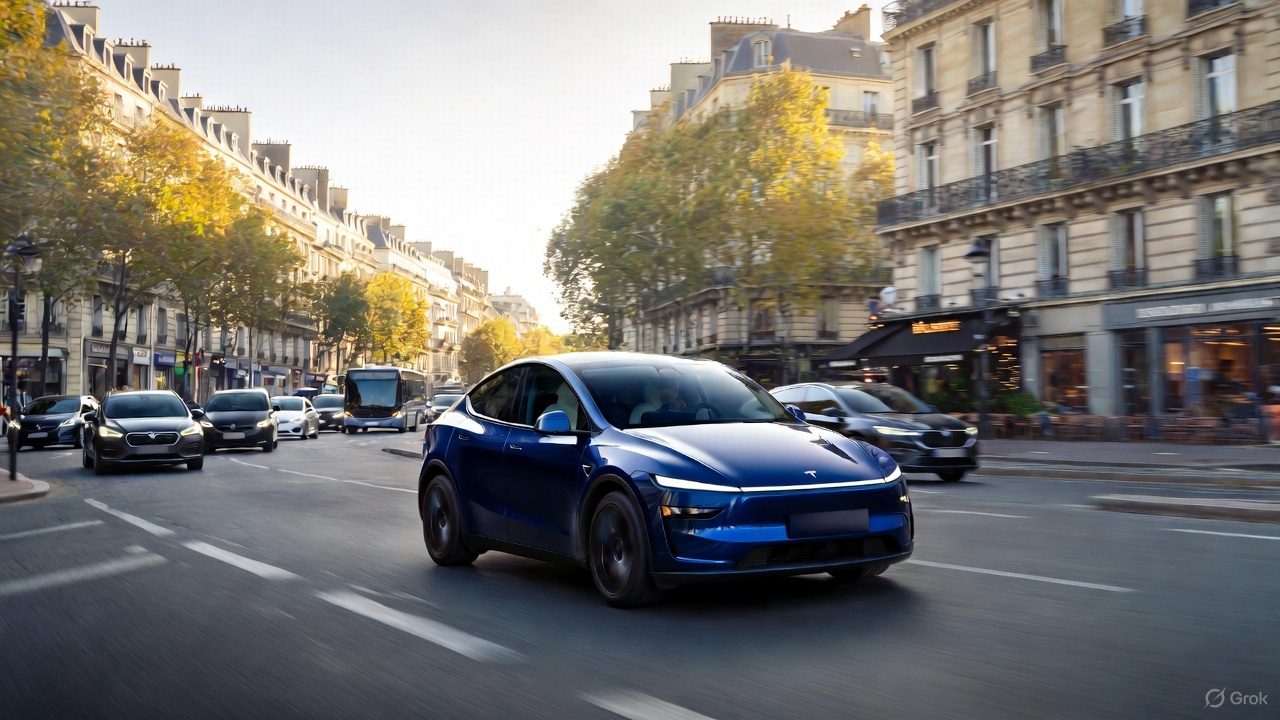
Tesla’s upcoming FSD Supervised system, set for a European debut pending regulatory approval, is showing notably refined behavior in real-world testing, including construction zones, pedestrian detection, and lane changes, as per a recent demonstration ride in Berlin.
While the system still required driver oversight, its smooth braking, steering, and decision-making illustrated how far Tesla’s driver-assistance technology has advanced ahead of a potential 2026 rollout.
FSD’s maturity in dense city driving
During the Berlin test ride with Auto Bild, Germany’s largest automotive publication, a Tesla Model 3 running FSD handled complex traffic with minimal intervention, autonomously managing braking, acceleration, steering, and overtaking up to 140 km/h. It recognized construction zones, braked early for pedestrians, and yielded politely on narrow streets.
Only one manual override was required when the system misread a converted one-way route, an example, Tesla stated, of the continuous learning baked into its vision-based architecture.
Robin Hornig of Auto Bild summed up his experience with FSD Supervised with a glowing review of the system. As per the reporter, FSD Supervised already exceeds humans with its all-around vision. “Tesla FSD Supervised sees more than I do. It doesn’t get distracted and never gets tired. I like to think I’m a good driver, but I can’t match this system’s all-around vision. It’s at its best when both work together: my experience and the Tesla’s constant attention,” the journalist wrote.
Tesla FSD in Europe
FSD Supervised is still a driver-assistance system rather than autonomous driving. Still, Auto Bild noted that Tesla’s 360-degree camera suite, constant monitoring, and high computing power mark a sizable leap from earlier iterations. Already active in the U.S., China, and several other regions, the system is currently navigating Europe’s approval pipeline. Tesla has applied for an exemption in the Netherlands, aiming to launch the feature through a free software update as early as February 2026.
What Tesla demonstrated in Berlin mirrors capabilities already common in China and the U.S., where rival automakers have rolled out hands-free or city-navigation systems. Europe, however, remains behind due to a stricter certification environment, though Tesla is currently hard at work pushing for FSD Supervised’s approval in several countries in the region.
News
Tesla reliability rankings skyrocket significantly in latest assessment
“They definitely have their struggles, but by continuing to refine and not make huge changes in their models, they’re able to make more reliable vehicles, and they’ve moved up our rankings.”
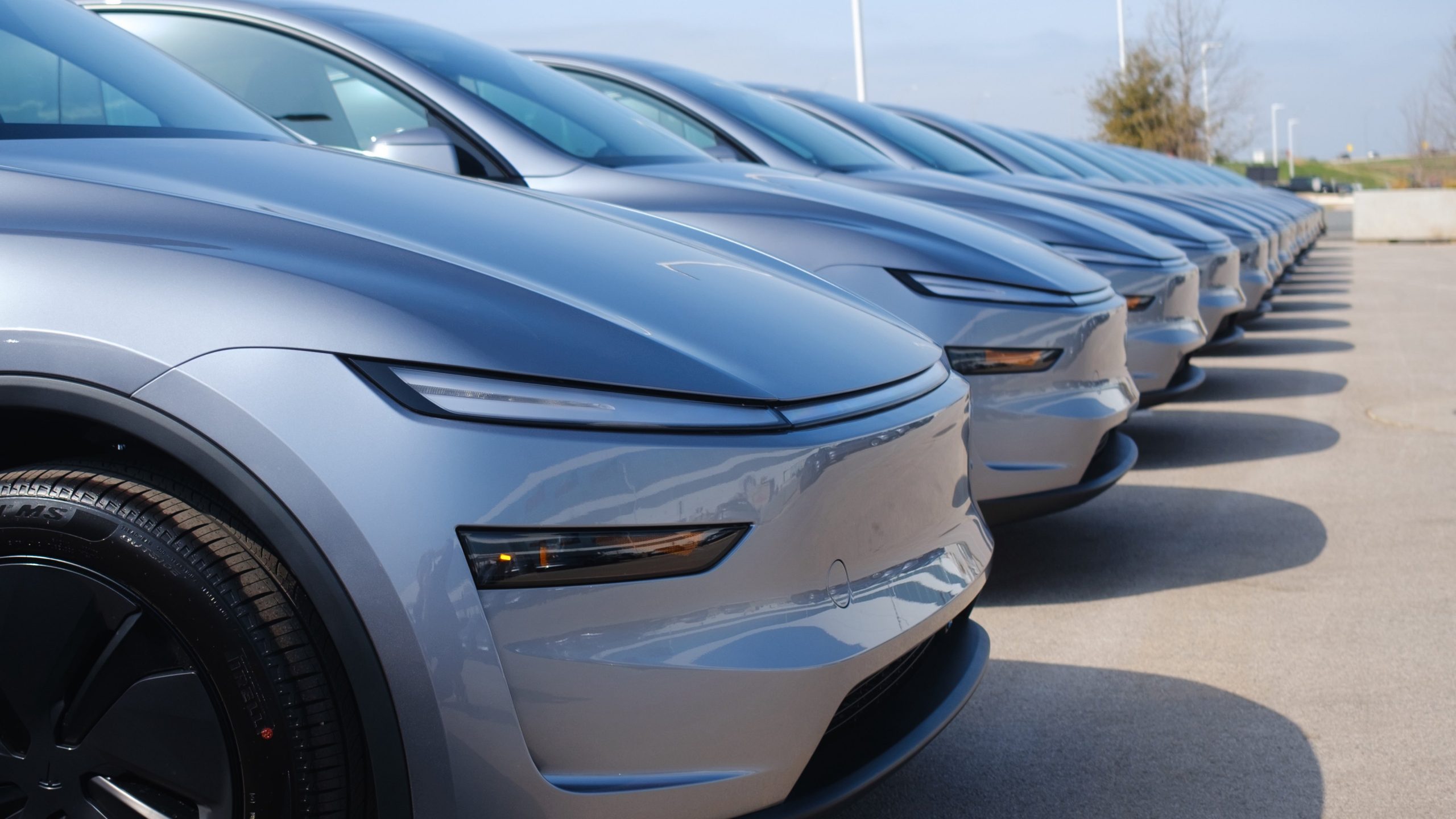
Tesla ranked in the Top 10 of the most reliable car companies for 2026, as Consumer Reports’ latest index showed significant jumps from the past two years.
In 2022, Tesla ranked 27th out of 28 brands. Last year, it came in 17th.
🚨🚨 Tesla entered the Top 10 in Consumer Reports’ list of reliable carmakers for the first time
In the past two years, Tesla has ranked 17th in 2024 and 27th out of 28 brands in 2022.
Subaru, BMW, Porsche, Honda, and Toyota were the Top 5 OEMs in the rankings. pic.twitter.com/z216bccVoH
— TESLARATI (@Teslarati) December 4, 2025
However, 2026’s rankings were different. CR‘s rankings officially included Tesla in the Top 10, its best performance to date.
Finishing tenth, the full Top 10 is:
- Subaru
- BMW
- Porsche
- Honda
- Toyota
- Lexus
- Lincoln
- Hyundai
- Acura
- Tesla
Tesla has had steady improvements in its build quality, and its recent refinements of the Model 3 and Model Y have not gone unnoticed.
The publication’s Senior Director of Auto Testing, Jake Fisher, said about Tesla that the company’s ability to work through the rough patches has resulted in better performance (via CNBC):
“They definitely have their struggles, but by continuing to refine and not make huge changes in their models, they’re able to make more reliable vehicles, and they’ve moved up our rankings.”
He continued to say that Tesla’s vehicles have become more reliable over time, and its decision to avoid making any significant changes to its bread-and-butter vehicles has benefited its performance in these rankings.
Legacy automakers tend to go overboard with changes, sometimes keeping a model name but recognizing a change in its “generation.” This leads to constant growing pains, as the changes in design require intense adjustments on the production side of things.
Instead, Tesla’s changes mostly come from a software standpoint, which are delivered through Over-the-Air updates, which improve the vehicle’s functionality or add new features.
Only one Tesla vehicle scored below average in Consumer Reports’ rankings for 2026 was the Cybertruck. Fisher’s belief that Tesla improves its other models over time might prove to be true with Cybertruck in a few years.
He continued:
“They’re definitely improving by keeping with things and refining, but if you look at their 5- to 10-year-old models that are out there, when it comes to reliability, they’re dead last of all the brands. They’re able to improve the reliability if they don’t make major changes.”
Regarding Subaru’s gold medal placing on the podium, Fisher said:
“While Subaru models provide good performance and comfort, they also excel in areas that may not be immediately apparent during a test drive.”
Other notable brands to improve are Rivian, which bumped itself slightly from 31 to 26. Chevrolet finished 24th, GMC ended up 29th, and Ford saw itself in 18th.








